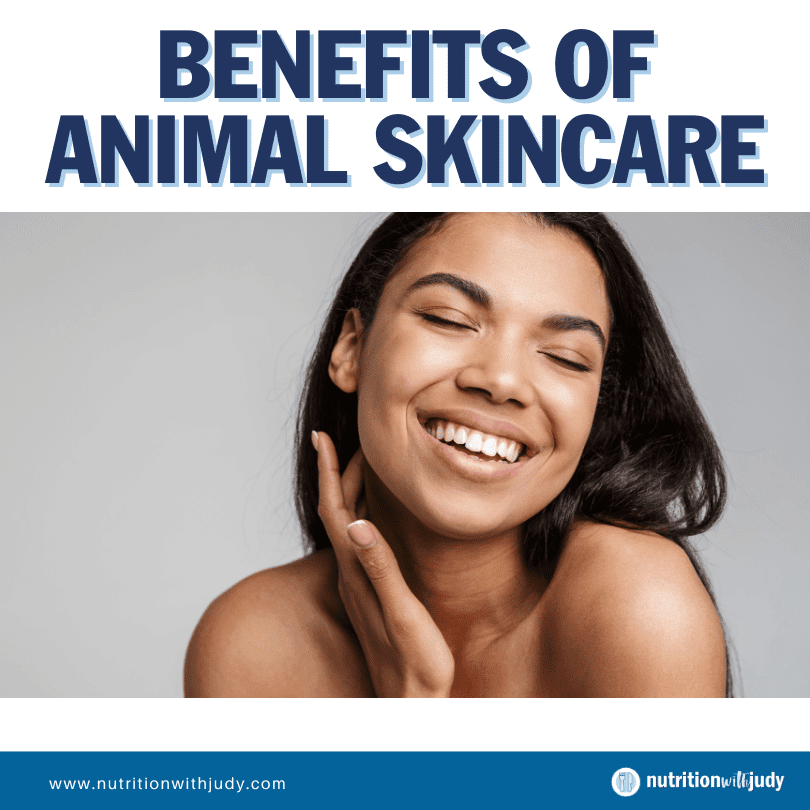

Benefits of Animal Skincare


We all know how wonderful it is to follow an animal-based diet. We heal and seal our guts, lose stubborn fat, stabilize important blood markers, stress less, sleep better and have more energy—to name a few.
Not only can we focus on eating more animal-based foods for our health, but we can also incorporate animal-based skincare and nourish ourselves from the outside in, just like we do from the inside out.
One way to do this is with the wonderful fat source we have been consuming for ages: beef tallow. Beef tallow is such a nourishing and healthy fat source in so many ways. We know it’s delicious to consume, but did you know it’s also fabulous for the skin?
Beef tallow is the rendered fat from beef. I always use 100% grass-fed beef tallow in my beauty products because it’s a naturally occurring nutrient-dense fat that beautifully nourishes our skin.
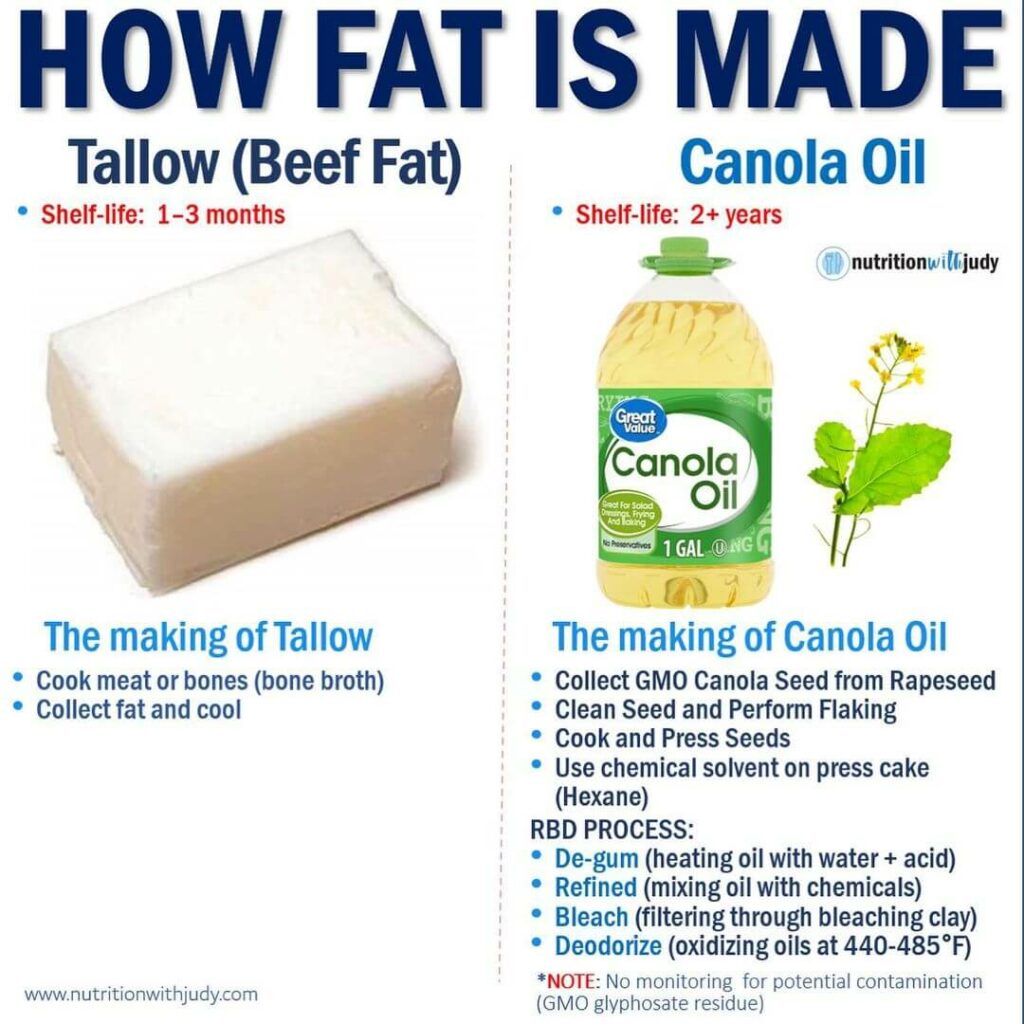

Why Choose Meat-Based Skincare?
There are some major issues with our current skincare products. Most of the products you find on the market today have not been tested for safety, and there is no mechanism or incentive for doing so. If you’re interested in reading about how the FDA does not regulate beauty and skincare products, you can read my previous blog post on “Best and Worst Personal Care Products.”
Because of this lack of oversight from the FDA, most commercial beauty and skincare products on the market contain harmful and toxic ingredients.
Instead of figuring out what products to use and not use, I make it really simple: I don’t put anything on my skin that I’m not willing to eat. If you were to eat your current personal care products, they would pass through your liver, and at least some of the harmful ingredients would get detoxified.


Why Beef Tallow?
We all know that beef tallow is a yummy and wonderfully nourishing fat to eat, but it also does wonders for our skin too and can be used in numerous ways.
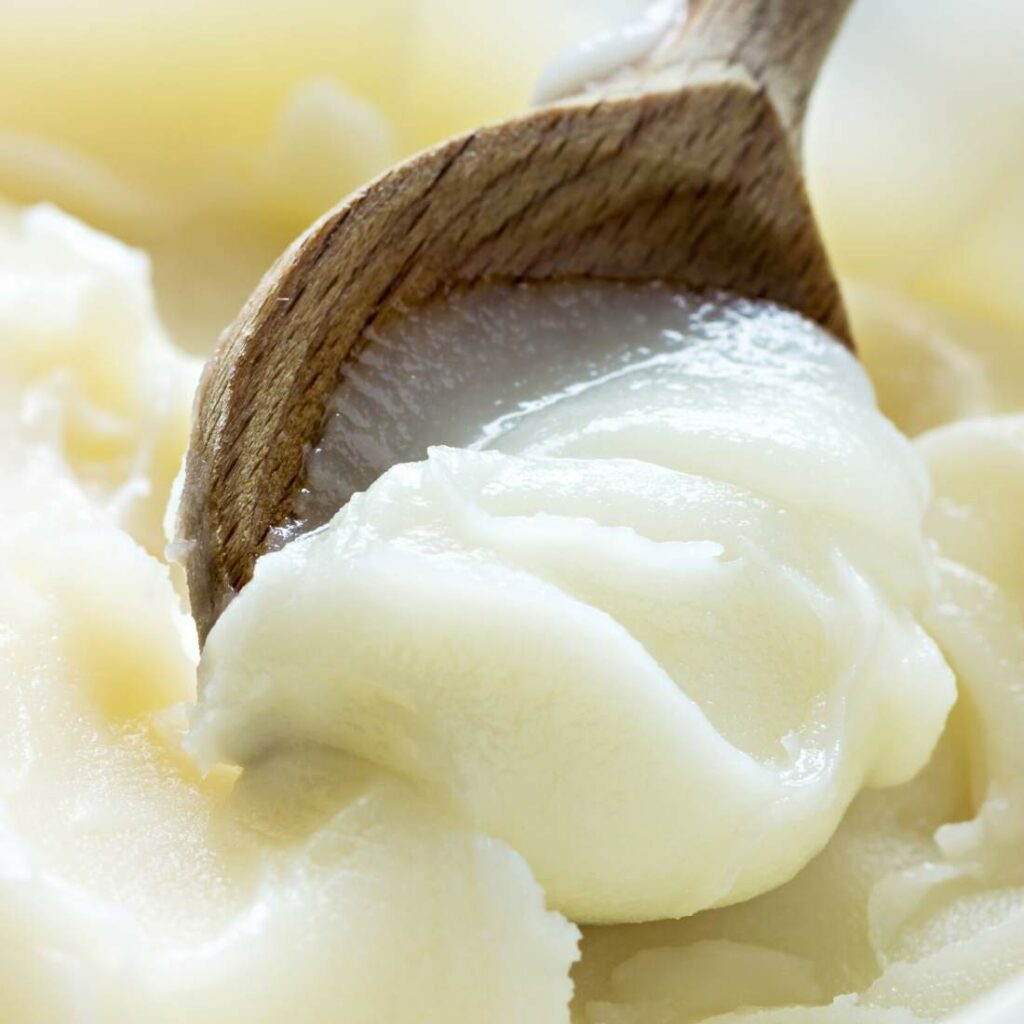

Beef Tallow Contains:
- Alpha Linoleic and Linoleic acids: These are basically your essential Omega-3’s and Omega-6’s and beef tallow has them in just the right ratio.
- Many antimicrobials and anti-inflammatory compounds, like Palmitic acid. Some of these compounds are the building blocks of our own skin and can decrease with age, so adding them back can make our skin appear more youthful.
- Stearic and Oleic acid: Beef tallow contains these fats and so does our skin. These are the fatty acids that are found in the oils our skin produces (sebum); that means some of the fatty acids in beef tallow and some of the fatty acids in our own oils are bioidentical. When the components are bioidentical, our body can use them much more readily than oils that are not.
- Vitamins A, B12, E, D, & K: This specific profile of nutrients can only be found in animal-based fats. This nutrient profile in the fat is what makes tallow so nourishing and beneficial for the skin.
Why I Prefer Beef Tallow for My Skincare Routine
- It can repair skin damage as well as prevent skin damage from occurring. This is because of the nutrient profile of the tallow itself and how bioavailable it is to our skin.
- It contains natural antimicrobial and acts as an anti-inflammatory. This means that beef tallow is ideal for preventing and treating acne breakouts. Beef tallow-based moisturizers are safe to use on acne-prone skin. (Dietary changes will make big changes to hormonal acne production)
- It is such a nutrient-dense fat. Beef tallow contains many nutrients essential for skin health and keeps it supple and soft.
- Once you try using beef tallow, you’ll see how nourishing tallow is than plant-based moisturizers that never really penetrate the skin completely. The skin almost instantly absorbs beef tallow lotion, cream, or butter and the effect is quickly noticeable.
- The oils in beef tallow and the oils in our skin are almost bioidentical. This means that we can more easily uptake the nutrients into our skin from beef tallow rather than the more common plant-based moisturizers.
- The profile of our skin changes as we age and some nutrients become depleted. Beef tallow could fill in some of nutrient gaps in a delivery mechanism that our skin can actually use.
Beef Tallow Skincare Recipes
Incorporating beef tallow into your healthy, toxin-free skincare routine and achieving gorgeous, supple, and glowing skin is straightforward and possible.
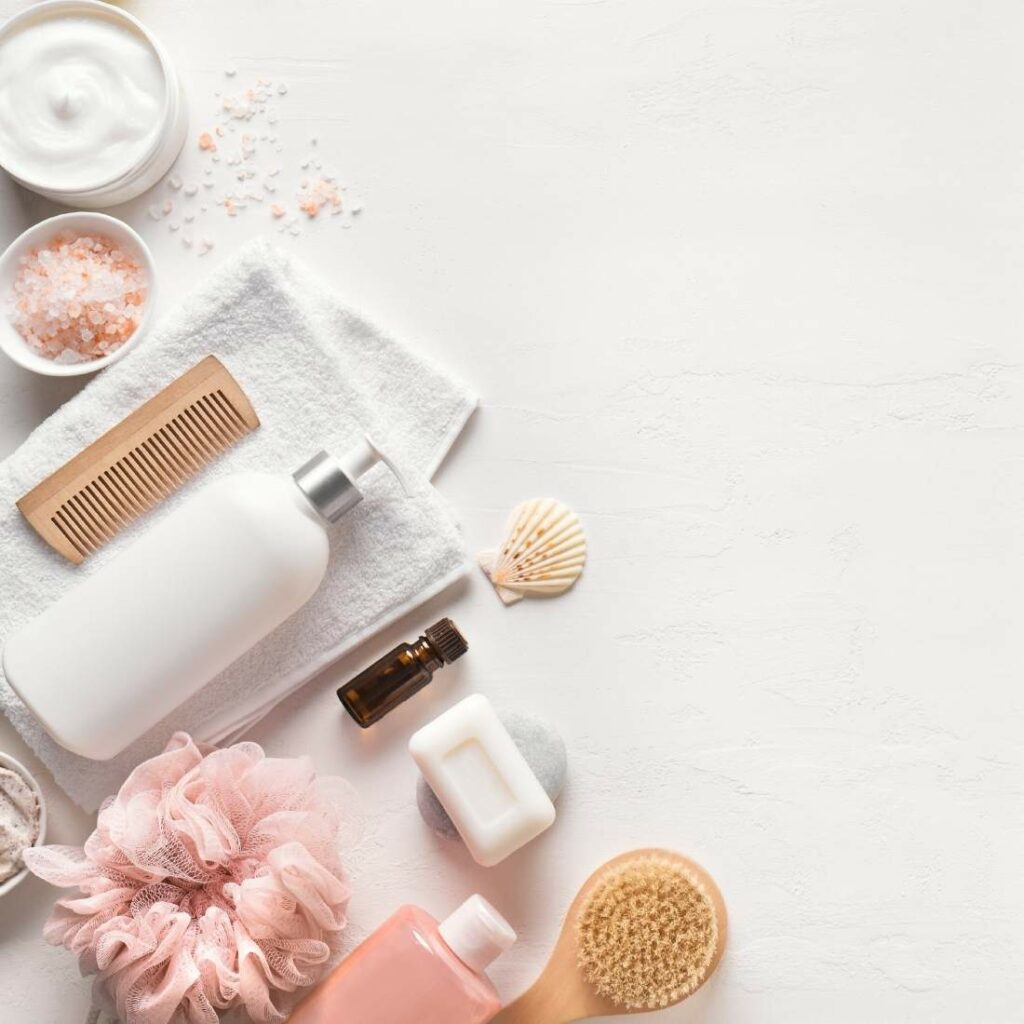

How to Incorporate Beef Tallow Into Your Beauty Care Routine
There truly are no limits on how you can begin incorporating animal-based fats into your skincare routine.
You can use it as a replacement fat for any product you use that is fat-based, i.e., soaps, lip balms, deodorants, toothpaste, conditioners, etc.
Here are a few recipes our community has shared for incorporating beef tallow into personal care products:
Tallow Body Butter Recipe
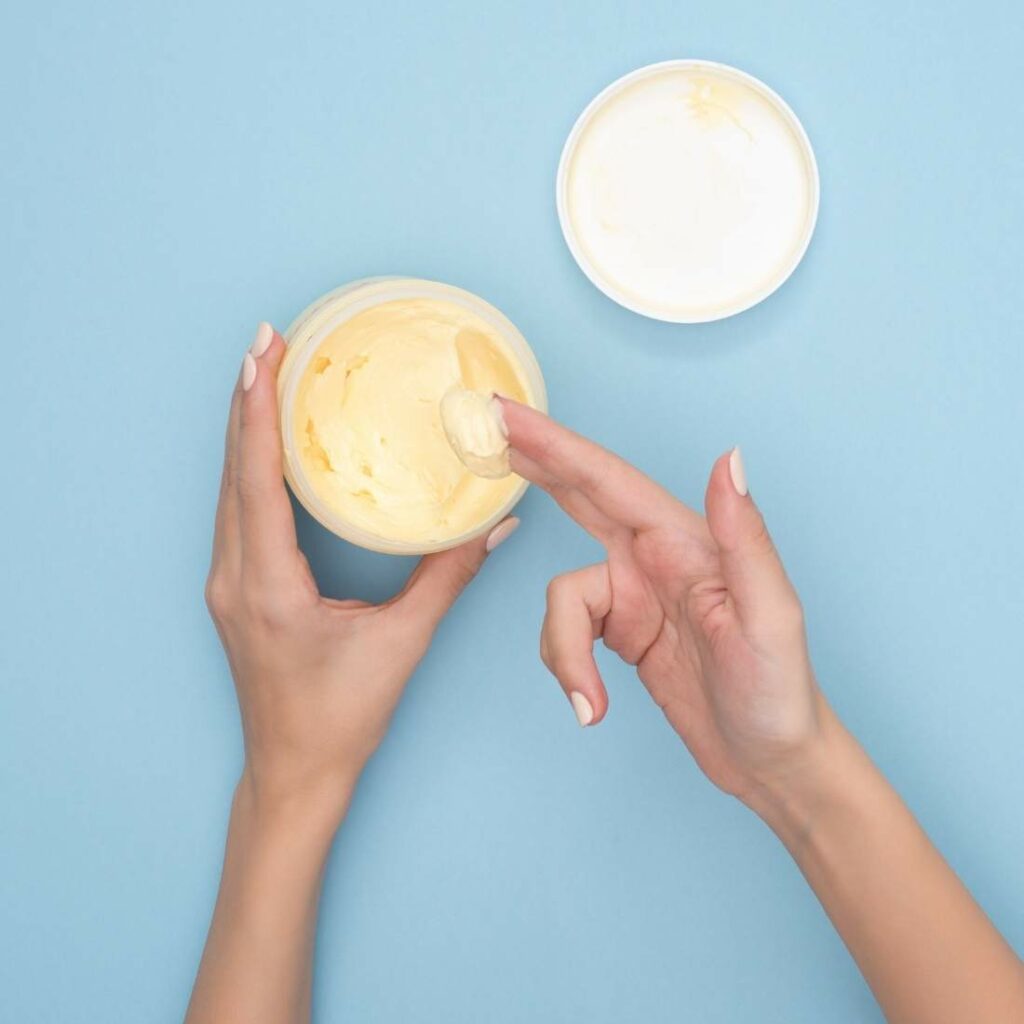

It really is that easy to make a luxurious skin cream. However, if you prefer to buy it, this is the one we like. You can use this body butter daily or when you feel some dry skin (e.g., during the winter months).
Ingredients:
- 1 cup grass-fed beef tallow. You can also make your own bone broth and use the tallow you saved.
- ¼ cup liquid oil (olive, avocado, etc.) (optional, I usually leave this out)
- Essential oils (optional). Stay away from Tea Tree and Lavender scents. You can learn more here.
Directions:
- Melt beef tallow on the stovetop.
- If using, add liquid oil and stir to combine.
- Once completely liquid, place in refrigerator until slightly solidified.
- Add essential oils if using.
- Whip with a hand mixer.
- Store in a preferred container.
Beef Tallow Deodorant


Ingredients:
- ¼ cup baking soda
- 2½ tbsp. beef tallow
- Essential oils (if using)
Directions:
- Melt beef tallow on the stovetop.
- Once fully melted, remove from heat, add baking soda and essential oils (if using) and stir until combined.
- Store in a preferred container.
Beef Tallow Toothpaste


Ingredients:
- 3 tbsp. baking soda
- 1 tbsp. beef tallow
- 5 drops peppermint essential oil (optional)
Directions:
- Melt beef tallow.
- Remove from heat, add additional ingredients, and stir until combined.
- Store in a preferred container


Closing Thoughts
By making a few simple swaps and taking a little bit of time, you might get closer to optimal health.
Our bodies aren’t meant to be burdened by harmful pesticides and chemicals. Using beef tallow as an alternative is such a loving way to support your health and maximize the vibrancy of your skin.
Remember to eat enough fatty meat, hydrate well, and ensure you get enough minerals, as these factors also impact your skin health.
If you eat mostly meat-based and swap all your personalized care products but still do not feel 100%, you may want to work more closely with the Nutrition with Judy nutritionist team. We can work with you in a one-on-one personalized manner and provide the support you need on your health journey to get to root-cause healing.
If you’re ready to heal, you can start the process with the Symptom Burden Assessment and Consult.
Healing can happen, and the odds are that if you are eating a meat-based diet, you’re already ahead of the curve. Sometimes these small tweaks to our lifestyle can make all the difference, hasten our healing, and allow us to feel our best.
If you enjoyed this blog post, you may also enjoy these Nutrition with Judy blog posts:
DISCLAIMER: The content is for educational purposes only. While I am board-certified in holistic nutrition and a nutritional therapy practitioner, I am not providing medical advice. Whenever you start a new diet or protocol, always first consult with your trusted practitioner.




Marti
May 29, 2022 at 3:38 pmDo you have a source for beef tallow for those who don’t have the time to make their own?
Nutrition with Judy
July 26, 2022 at 10:33 pmYes! this is a great option: https://www.etsy.com/listing/1195481444/100-grassfed-beef-tallow-body-butter